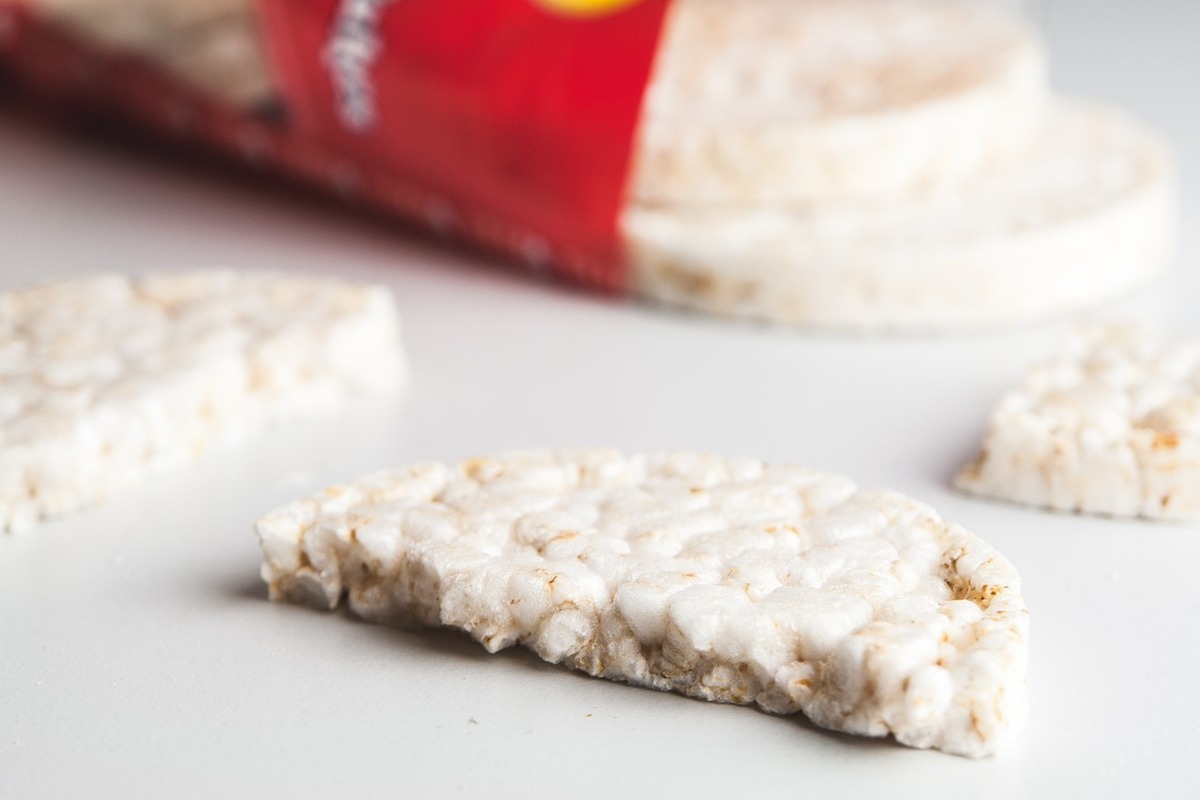Rice cakes hold a special place in culinary traditions around the world. From their humble beginnings in ancient cultures to their modern-day adaptations, these versatile treats continue to captivate taste buds and intrigue food enthusiasts. If you’ve ever wondered “what kind of rice cake is this?” you’re in for a flavorful journey. Let’s delve into the enchanting world of rice cakes and uncover their unique characteristics.
Rice cakes come in a multitude of varieties, each boasting its own distinct flavor, texture, and cultural significance. Traditional Asian rice cakes, such as Korean tteok and Japanese mochi, offer a glimpse into centuries-old culinary traditions. Beyond Asia, rice cakes have found their way into global cuisines, with adaptations like Italian risotto and Chinese nian gao adding new dimensions to this ancient delicacy. To explore the rich diversity of rice cakes, check out these resources.
In addition to their cultural heritage, rice cakes are celebrated for their versatility in flavor and ingredients. From classic combinations like red bean and sesame to innovative twists featuring exotic fruits and spices, there’s a rice cake flavor to suit every palate. Discover endless possibilities with these mouthwatering recipes that showcase the vibrant flavors of rice cakes.
Nutritional Profile
- Low in Calories: Rice cakes are a guilt-free snack option, with minimal calories per serving.
- Gluten-Free: Ideal for individuals with gluten sensitivities or celiac disease.
- Low Fat: A light and satisfying snack without the added fat content.
While rice cakes are beloved for their flavor and texture, they also offer notable health benefits. Made primarily from rice and water, rice cakes are naturally gluten-free, making them a safe choice for those with gluten sensitivities or celiac disease. Additionally, rice cakes are low in fat and calories, making them a guilt-free snack option. For more information on the nutritional benefits of rice cakes, check out this resource.
Preparation Methods
- Steaming: Traditional method used in Asian cuisine for soft and chewy rice cakes.
- Pounding: Labor-intensive technique for creating smooth and dense rice cakes.
- Frying: Crispy and golden-brown rice cakes popular in Western cuisine.
The versatility of rice cakes extends to their preparation methods, with various techniques yielding different textures and flavors. Whether steamed, pounded, or fried, each method imparts its own unique characteristics to the final product. Explore the art of rice cake preparation with these expert tips.
Serving Suggestions
- Pair with Tea: Enjoy rice cakes as a light and elegant accompaniment to your favorite tea.
- Top with Spread: Elevate the flavor of plain rice cakes with savory spreads like hummus or avocado.
- Incorporate into Recipes: Use rice cakes as a versatile ingredient in dishes like salads, stir-fries, and desserts.
Rice cakes are not only delicious on their own but also serve as a versatile ingredient in various culinary creations. Whether paired with tea for an elegant afternoon snack or incorporated into vibrant recipes, rice cakes add a unique touch to any dish. Explore creative serving suggestions and recipe ideas with these inspiring recipes.
Cultural Significance
- Rituals and Ceremonies: Rice cakes play a central role in various cultural rituals and ceremonies around the world.
- Symbolism: In many cultures, rice cakes symbolize prosperity, longevity, and good fortune.
- Community Traditions: Sharing and enjoying rice cakes with loved ones is a cherished tradition in many communities.
Beyond their culinary appeal, rice cakes hold deep cultural significance in many societies. From wedding ceremonies to religious festivals, rice cakes are a staple in celebrations and rituals, symbolizing themes of abundance, unity, and blessings. Explore the rich cultural heritage of rice cakes with these insights.
Regional Variations
- Asia: Each Asian country boasts its own unique varieties of rice cakes, reflecting local ingredients and traditions.
- Europe: Rice cakes have been adapted into European cuisines, with variations like Italian arancini and Spanish tortas de arroz.
- Americas: From Latin American arepas to North American rice crispy treats, rice cakes have become a beloved snack and dessert option across the Americas.
Notable regional differences in rice cake preparation and consumption offer a fascinating glimpse into the diverse culinary landscapes of different continents. While Asian rice cakes are often steamed or pounded, European and American adaptations feature a wide range of cooking methods and flavor profiles. Dive into the world of regional rice cake variations with these insightful articles.
Health Considerations
- Allergen Information: Rice cakes are generally safe for individuals with common food allergies like gluten and nuts.
- Dietary Restrictions: Rice cakes are suitable for vegan and vegetarian diets, offering a versatile snack option.
- Moderation: While rice cakes are low in calories, it’s important to consume them as part of a balanced diet and lifestyle.
For individuals with dietary restrictions or health considerations, rice cakes offer a convenient and satisfying snack option. Whether you’re following a gluten-free, vegan, or low-calorie diet, rice cakes provide a versatile canvas for creating delicious and nutritious snacks. Learn more about incorporating rice cakes into your diet with these helpful resources.
Rice Cake Innovations
- Fusion Cuisine: Chefs around the world are experimenting with innovative rice cake dishes that blend traditional flavors with modern techniques.
- Contemporary Desserts: Rice cakes have found their way into trendy dessert creations like ice cream sandwiches and cake pops.
- Global Influences: The popularity of rice cakes continues to grow, with new variations and interpretations emerging in diverse culinary scenes.
The culinary world is constantly evolving, and rice cakes are no exception. From fusion cuisine to contemporary desserts, chefs and food enthusiasts are pushing the boundaries of traditional rice cake recipes, resulting in exciting new creations that captivate the senses. Explore the latest rice cake innovations with these inspiring recipes.
Cultural Appreciation and Awareness
- Respecting Traditions: Learning about the cultural significance of rice cakes fosters appreciation and respect for diverse culinary traditions.
- Cultural Exchange: Exploring different types of rice cakes allows for cultural exchange and connection with people from around the world.
- Celebrating Diversity: Embracing the rich tapestry of rice cake varieties reflects a celebration of cultural diversity and heritage.
As we indulge in the pleasures of rice cakes, it’s important to recognize and honor the cultural significance of these beloved treats. By learning about the traditions and customs associated with rice cakes, we gain a deeper appreciation for the cultural diversity that enriches our world. Join the celebration of rice cake diversity with these cultural insights.
FAQs (Frequently Asked Questions)
Are rice cakes gluten-free?
- Yes, rice cakes are typically gluten-free as they are made primarily from rice, which does not contain gluten. However, it’s essential to check the ingredients list for any potential cross-contamination if you have gluten sensitivities or celiac disease.
What is the shelf life of rice cakes?
- The shelf life of rice cakes can vary depending on the brand and packaging. Generally, unopened packages of rice cakes can last for several months when stored in a cool, dry place. Once opened, it’s best to consume them within a few weeks for optimal freshness and taste.
Are rice cakes suitable for vegan diets?
- Yes, rice cakes are suitable for vegan diets as they are made from plant-based ingredients, primarily rice. They do not contain any animal products or by-products, making them a safe and satisfying snack option for vegans.
Can rice cakes help with weight loss?
- Rice cakes are often touted as a low-calorie snack option, making them popular among individuals looking to manage their weight. However, it’s essential to consume them as part of a balanced diet and lifestyle, as simply eating rice cakes alone may not lead to significant weight loss.
How should rice cakes be stored?
- Rice cakes should be stored in a cool, dry place away from direct sunlight to maintain their freshness and crispness. It’s best to keep them in an airtight container or resealable bag once opened to prevent them from becoming stale.
Can rice cakes be used as a substitute for bread?
- While rice cakes can be used as a substitute for bread in some instances, such as making sandwiches or toast, they have a different texture and flavor profile. It’s essential to consider the specific dish or recipe when substituting rice cakes for bread to ensure compatibility with other ingredients and flavors.
Conclusion
In conclusion, the answer to “what kind of rice cake is this?” is as diverse and flavorful as the world of culinary delights itself. With a rich history, endless flavor variations, and versatile preparation methods, rice cakes continue to enchant and inspire food lovers worldwide. So, indulge your senses and embark on a delicious journey through the enchanting world of rice cakes.

